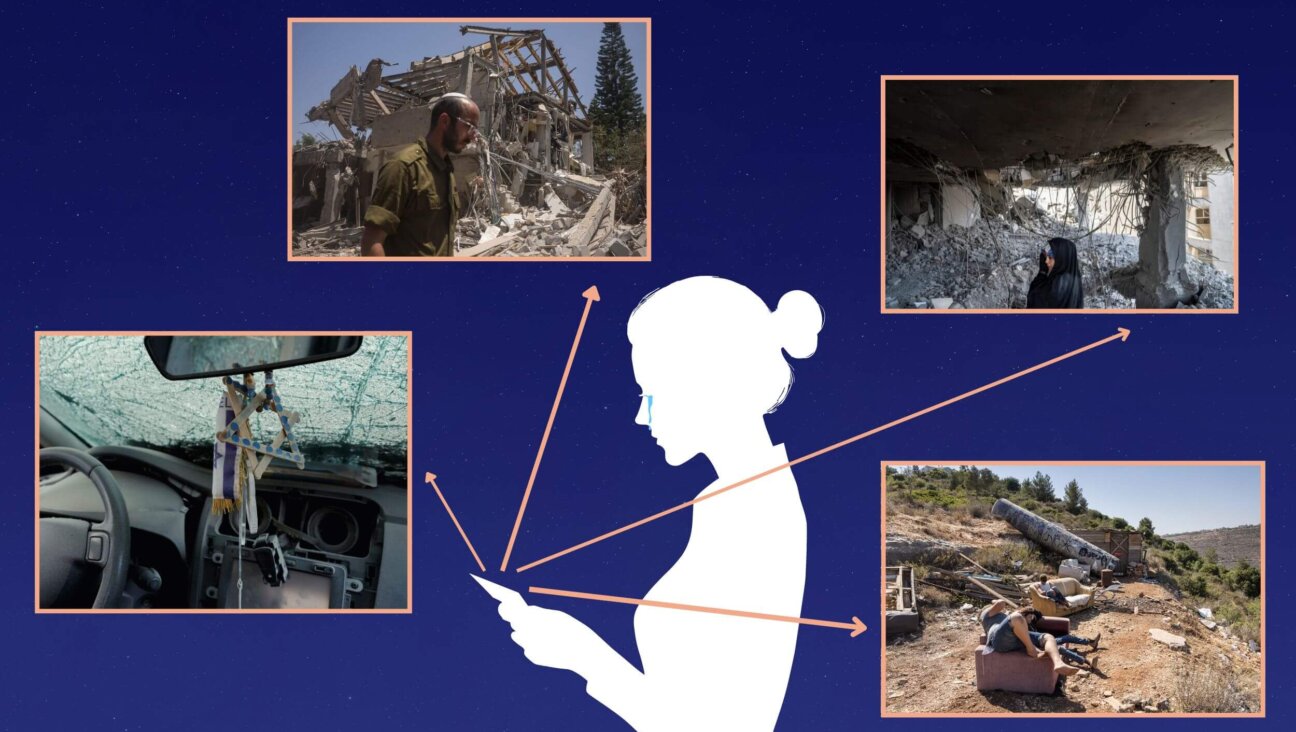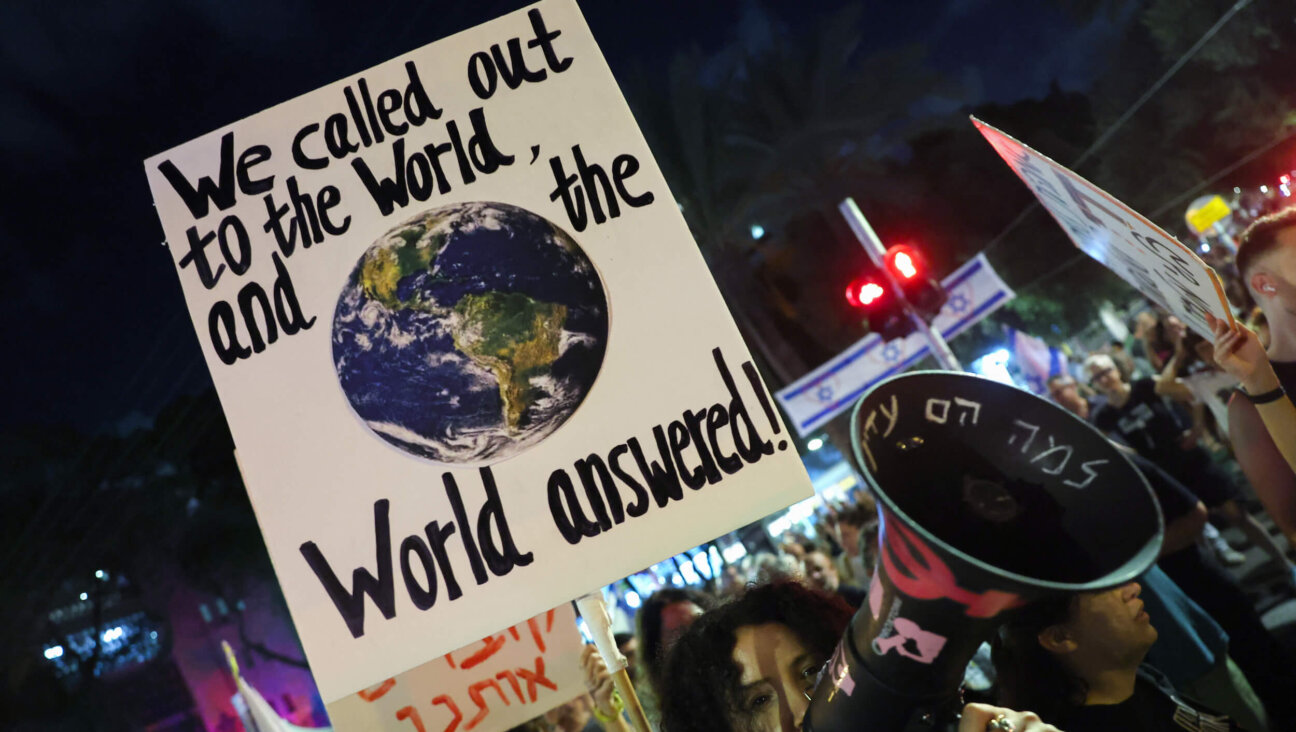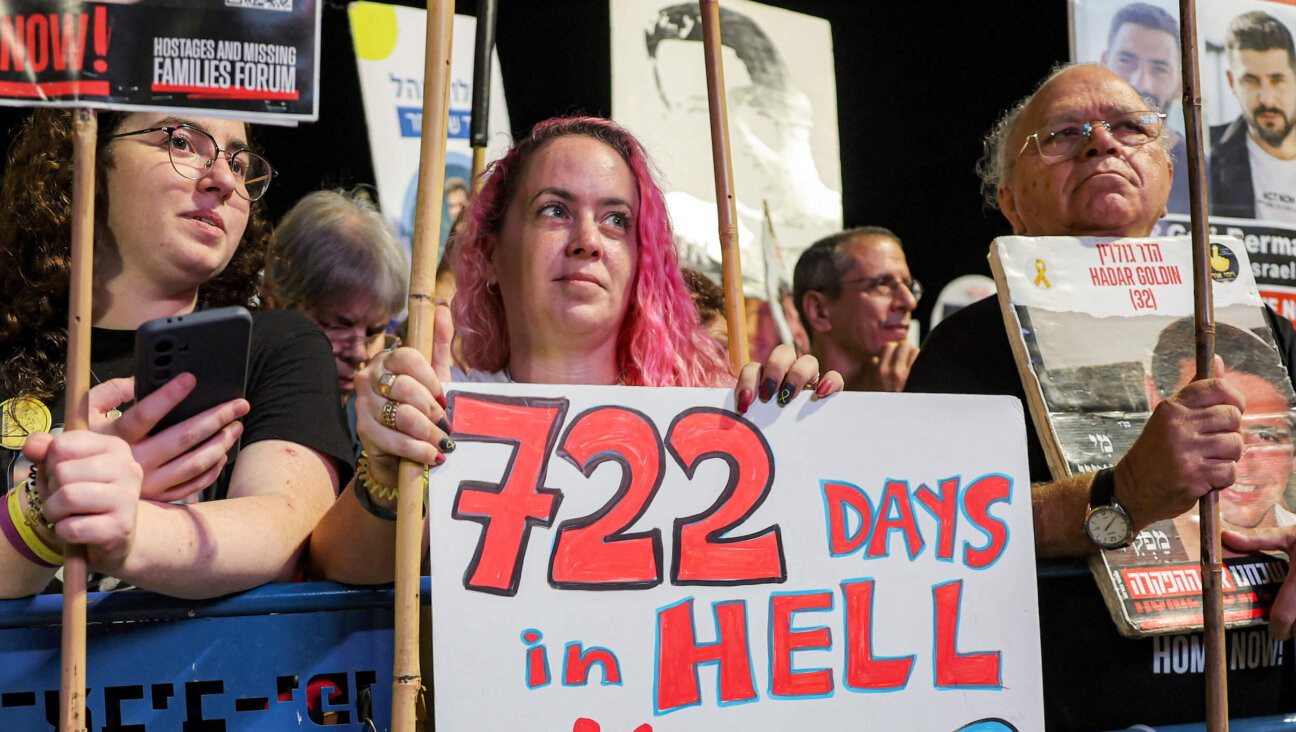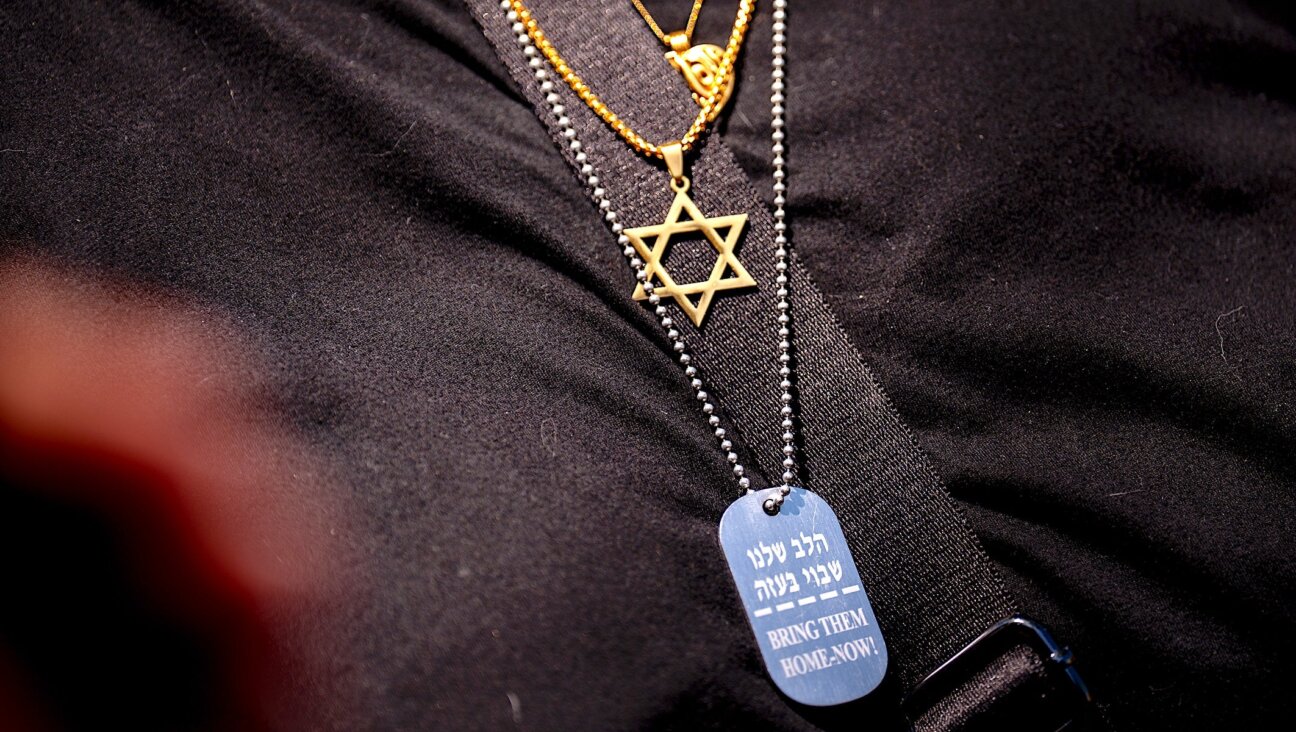Benjamin Netanyahu Lashes Out at Hamas — But Real Enemy Is Elsewhere

Image by getty images
Sign up for Forwarding the News, our essential morning briefing with trusted, nonpartisan news and analysis, curated by Senior Writer Benyamin Cohen.
On Monday afternoon, June 9, the research director of Israel’s military intelligence corps appeared before an international audience of defense experts and policymakers at a conference near Tel Aviv and delivered an hour-long, rapid-fire outline of the strategic threats and opportunities facing the Jewish state in 2014.
Speaking in a terse, emotionless Hebrew, Brigadier General Itai Brun detailed a chilling catalogue of the region’s deadly arsenals and enemy alliances. His conclusion, unexpectedly, was that Israel is relatively secure. The reason: Deterrence. The cost of attacking Israel has been set painfully high. “None of the main forces facing us is interested in a major confrontation,” Brun said, “because they fear the prospect of escalation and destruction.”
There was, however, one exception: “Global jihad.”
Neither Brun nor his audience knew that in a few hours his thesis would be put to a live test in a pair of crises that would set all the regional players in motion, first in Iraq, then in the West Bank. The crises would also expose, more starkly than ever, the yawning gap in outlook between Israel’s security establishment and its political leadership.
Global jihad is one of four main “camps” that define today’s Middle East as Israeli intelligence sees it. The others are, first, the “radical axis” of Shi’ite Iran, Syria, Hezbollah and Islamic Jihad; second, the Muslim Brotherhood and similar nationalist-oriented Sunni Islamist parties; and third, the “moderate camp,” including Egypt, Jordan, Saudi Arabia and the Gulf states.
Three of the four camps pose challenges that are essentially manageable. Even Hezbollah, the radical Shi’ite militia, and Hamas, the Islamist Muslim Brotherhood affiliate, are committed to “maintaining the calm.” That’s because, in the words of Brun’s boss, military chief of staff Benny Gantz, speaking earlier at the same conference, “they’ve learned the price of attacking us.”
Global jihad is the wild card. “Deterrence works against state-like entities” like Hezbollah and Hamas, Gantz said. It doesn’t work against jihadists, because they have nothing to lose and a world to gain.
That, at least, is the consensus view of Israel’s intelligence agencies: the Middle East as a sort of three-dimensional chessboard. It’s not how the political leadership sees things, though. They’re playing checkers.
Benjamin Netanyahu has argued for years, in books, speeches and government policies, that terrorism is a single, seamless, worldwide phenomenon. Contrasting Hamas, Hezbollah or Iran with the madmen of global jihad is a distinction without a difference. Hamas and Hezbollah are merely Israel’s front in a world war that democratic peoples everywhere are fighting together — or would be if they had any guts.
On Monday evening, June 9, just hours after Brun’s speech, some 800 Sunni fighters of the so-called Islamic State in Iraq and Syria, or ISIS, captured Mosul, Iraq’s second largest city. Riding on pickup trucks, they routed two U.S.-trained divisions of the mostly-Shi’ite Iraqi army. Thirty thousand soldiers fled, most on foot, abandoning millions of dollars in advanced American weaponry. Hundreds who ran too slowly were massacred. ISIS then stormed the Turkish consulate, kidnapping the consul, 24 staffers and an unknown number of family members.
The event landed on the world’s front pages like a nuclear blast, shattering a century of assumptions about the Middle East. For America it was humiliating: the utter collapse of a goal, a terror-free Iraq, that had guided U.S. foreign policy since 2001, at a cost of trillions of dollars and 4,000 American lives. For Iraq’s neighbors it was catastrophic: the threat of a jihadi terrorist state on their doorstep, stretching across Iraq and Syria, contemptuous of international norms, bent on global Islamic revolution.
Most immediately threatened was the Shi’ite government in Baghdad. It was supposed to have evolved in the democratic image of America. Instead it looked increasingly like an Iranian asset. Facing jihadi onslaught, though, those distinctions paled. ISIS made allies not just of Islamist Turkey and “moderate” Saudi Arabia but even radical Iran and democratic America. Brun’s scenario was Netanyahu’s nightmare.
Three days later, on Thursday, June 12, a crisis of a different order erupted: three Israeli teenagers kidnapped while hitchhiking in the West Bank. The event hit Israeli society in the gut, evoking traumatic memories of the long captivity of Gilad Shalit and aviator Ron Arad. Israelis could talk about little else for days. It seemed the boys’ disappearance had reunited Israel into the big family it was years ago.
Israel’s security services went into overdrive. Troops searched from house to house in and around Hebron, near the kidnapping site. Dozens of Hamas and Islamic Jihad operatives were rounded up in the search for evidence.
Early clues pointed to Hebron-based Hamas activists. Intelligence experts speculated that it was a rogue cell, out to scuttle the two-week old Hamas-Fatah reconciliation pact or perhaps join up with global jihadists. Hamas itself, broke and internationally isolated, had seized on reconciliation as a lifeline, they argued, and had no motive to jeopardize it. In the great three-dimensional chess game, Islamism was crawling toward the moderates.
But that wasn’t how Netanyahu saw it. Within hours he was publicly calling the kidnapping a product of the reconciliation pact (ignoring the fact that kidnapping attempts were occurring weekly for the past year, long before reconciliation). By Sunday, as evidence of some Hamas link firmed up, arrests grew from a few dozen in Hebron to hundreds throughout the West Bank, including nearly the entire Hamas leadership.
Monday evening Netanyahu addressed a brief press conference, flanked by Gantz and Defense Minister Moshe Yaalon, and acknowledged what was already obvious: The search for the boys was now a full-scale crackdown on Hamas. No need to wait for firm evidence of who’s responsible. “Hamas,” Yaalon said, “will pay a heavy price.”
The concern wasn’t just military. Netanyahu, it appeared, was alarmed — indeed, furious — at the creeping reclassification of Hamas from jihad to political Islamism. Close to half his four-minute remarks were spent denouncing “elements in the international community” that hadn’t condemned the kidnapping and endorsed Israel’s counterattack. Hebron was no different from Mosul. “Anyone who opposes terror must condemn terror everywhere,” he said. Jihad, Islamism, Shia radicalism — they’re all the same thing.
Gantz, speaking after him, could only shrug his shoulders. Speaking barely a minute, he expressed sympathy for the kidnap victims and praised his troops’ dedication. “They remember their job,” he said. “To defend the state of Israel and to act in the name of the government of Israel and achieve all assigned objectives.” Put differently: Don’t blame me. I just do what these guys tell me to do.
Contact J.J. Goldberg at [email protected]














